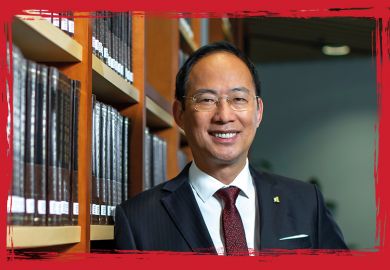When it comes to higher education in the Republic of Korea, most of us would find it hard to answer key questions. What do you think about their university research priorities? Who would you partner with on an international exchange programme? OK, maybe an easier one. How many universities in South Korea can you name? There are four in the top 200 of the Times Higher Education World University Rankings, so you might start there. Three are in the top 100: ahead of Stockholm University, Trinity College Dublin, the University of Leeds and Texas A&M University.
Pohang University of Science and Technology (Postech) is 50th, Seoul National University is 59th and the Korea Advanced Institute of Science and Technology (Kaist) is 68th. Yonsei University, at 183rd, is ahead of the universities of Leicester, Twente and Miami.
We have been talking about the Asian tiger economies for 30 years. Since then, South Korea’s research publication output has passed that of Russia and is about the same as India’s (around 40,000 papers a year).
In September, I spent some time visiting Korean universities, research institutes and research hospitals, and came away with a sense of having previously known far too little about them. Although the statistics are impressive, most of us have little sense of what they mean on the ground.
As I witnessed, they mean extensive campuses with excellent new buildings and great facilities. Seoul National University would sit nicely alongside any of Europe’s established civic universities. More than half of its budget comes from research grants, contracts and donations. It has more than 25,000 students (10 per cent of them international and 40 per cent of them postgraduates) and more than 2,000 academic staff in 16 discipline-based colleges on its Seoul campus. Rather than a busy urban setting, it is spread across a huge parkland campus with shuttle buses to move staff and students around.
It is no surprise to find that much of the investment is technology orientated. Chemistry, physics, materials science and engineering make up about half of the Korean research base. Postech and Kaist are strong in these areas. They are well funded, with a sizeable part of their research income from industry, and they have good staff-to-student ratios. There is a strong sense of being in a buzzy knowledge environment when walking around the academic departments, rather than being in a degree factory.
Korean academics are direct. But this is not rudeness: rather, it is a sense of their being in a hurry to identify the task and tackle it. It is accompanied by a strong emphasis on research with tangible impact: the Department for Business, Innovation and Skills would love this place.
The message I came away with was twofold. First, the raw numbers had given me too little sense of academic strength and depth. More importantly, I gained a sense of Europe’s failure to see this sector’s potential. The Koreans repeatedly expressed interest in overcoming barriers to collaboration: who, they asked, might want to engage with their university, who should they contact, and how could they contact them? We in the West may be carelessly missing opportunities to create powerful partnerships. Can it be true that enquiries from universities in leading positions in the THE World University Rankings are going unanswered in UK vice-chancellors’ offices? Apparently it is.
South Korea’s universities are increasingly impressive and we need to be supportive of them as partners today before they decide tomorrow that there is better value to be had elsewhere.
Register to continue
Why register?
- Registration is free and only takes a moment
- Once registered, you can read 3 articles a month
- Sign up for our newsletter
Subscribe
Or subscribe for unlimited access to:
- Unlimited access to news, views, insights & reviews
- Digital editions
- Digital access to THE’s university and college rankings analysis
Already registered or a current subscriber? Login



